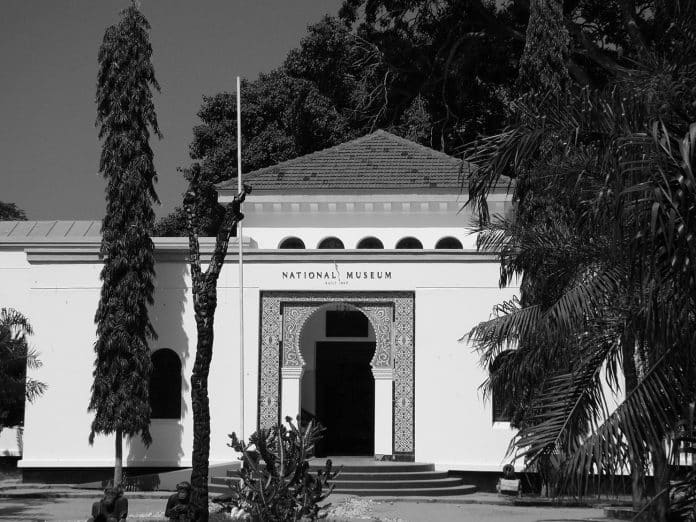A Must Visit List of Museums in Tanzania to be Familiar
The National Museums in Tanzania
The National Museum at Dar es Salaam is one such example. Nearby the botanical grounds is the National Museum on the street of Shaban Robert. In 1934, it was established as a tribute to King George V and unveiled to the masses in 1940; one of the King’s autos is still on view. The museum was expanded in 1963 when a second building was added. Now it is dedicated to Tanzania’s history. Louis Leakey’s discovery of Paranthropus boisei in Olduvai is one of its best-known displays. The Shirazi city-state of Kilwa is also well-represented in the museum; German and British domination and ancient Chinese pottery have left their mark on the region‘s historical artifacts. Anthropological exhibits about Tanzanian culture are also available at the museum.
Five museums work together to preserve and show exhibits on Tanzania’s history and natural surroundings at The National Museum of Tanzania. Tanganyika Governor Harold MacMichael founded the National Museum of Dar es Salaam in 1934, which sparked the collaboration. The Dar es Salaam Village Museum, the Arusha Natural History Museum, the Butiama Mwalimu Julius K. Nyerere Memorial Museum, and the National History Museum of Arusha have all joined the consortium.
The Importance of Museum in Tanzania and Reasons to Visit
The Village Museum
Designed as an open-air museum, the Village Museum was established in 1967 to collect, analyze, preserve, and promote unique architectural styles for Tanzanian ethnic groups. Until recently, this museum exhibits rural Tanzanian life as it was. Even if most of the houses built by the natives have been demolished, most ethnic groups, especially those who live in rural areas, still use them, but in a different form.
In minutes, our well-versed personnel can whisk you across the entire country. Please spend some time seeing Tanzania’s traditional architecture and antiquities and its lush gardens and winding nature trails. At the end of your tour, you’re both worn out and starving. Please join us in our restaurant, where you can enjoy a wide variety of ethnic foods and beverages and watch a live performance by one of our ethnic groups.
Approximately 30 historic houses in three unique fashions and classes can be seen at the Village Museum, like the:
- The Tembe, Msonge, and Banda styles.
In the first photograph, we see Msonge, while in the second, we see Tembe.
This is a great place to get away from the hustle and bustle of the city. As an option for the museums of Tanzania, you could have your event in this unique environment. Besides, where else can you spend a single day seeing the country’s entirety? The Village Museum team is eager to share Tanzania’s rich and dynamic history with you.
There are Several Historic Homes at the Village Museum
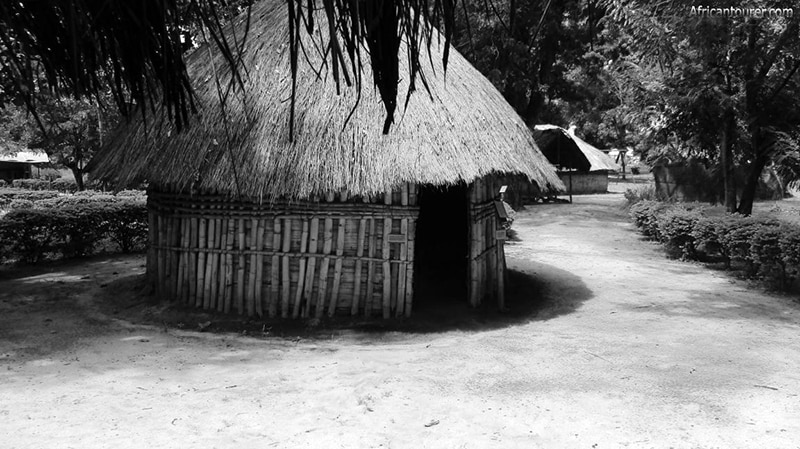
- The Nyambo tribe’s Msonge house in Karagwe, Kagera Region.
- The Haya residence in Bukoba’s Kagera neighborhood.
- The msonge huts by the Chaga tribe of Kilimanjaro.
- The Zaramo people‘s banda and dungu huts in the Coast Region.
- The Mbeya’s Nyakyusa people‘s banda and msonge huts, respectively.
- The Tanga community lives in a Msonge house.
- In the Kware tribe, banda homes and other small structures for traditional reasons.
- Native plants that Tanzanians employ in their daily lives can be found around their homes.
Visitors from around the world see Makonde Dance at the Village Museum. Ali Hassan Mwinyi Road, near Makaburini Street in Kinondoni District, Dar es Salaam Region, is the Village Museum’s location in Kijitonyama.
The Arusha Declaration Museum in Tanzania
Near the Uhuru Tower in the Kaloleni neighborhood lies the Arusha Declaration Museum. The Kaloleni community in Arusha, Tanzania, used this building as a social welfare center until 1967. In January 1967, Tanzania’s Political and Economic Policy of Socialism and Self-reliance was put into place. In February 1977, the building was converted into a small political museum.
Tanzania’s political economy is the focus of the Arusha museums in Tanzania’s educational efforts. You can use it to educate about history, civics, general studies, as well as politics and government. Doing so shows how Tanzania’s current position was built on the foundation of its prior social and economic progress. In an ever-changing economic and democratic environment, the exhibition and educational activities deepen public understanding of historical, social, and economic challenges and experiences.
Pre- and colonial history, the struggle for independence, the formulation of a self-reliance strategy, and Tanzania’s success following the Arusha Declaration are all displayed in the museum’s permanent exhibition.
Additional services include exhibition and ceremonial grounds, seminar and workshop rooms, research collaborations, heritage management advice, and tour guide services.
The MajiMaji War Memorial’s Museums in Tanzania
Tanzania’s National Museum includes the Majimaji Memorial Museum as a sub-division. The Majimaji Museum became a National Museum in 2010 and has been available to the public. Found in Songea area of Ruvuma on Mashujaa Street, adjacent to Mahenge Road.
This is the only museum in Tanzania devoted to the history of the MajiMaji resistance during the liberation attempts of the Germans. It is situated where around 67 MajiMaji icons were squashed. On February 27, 1906, the MajiMaji heroes were publicly hanged, and 66 of them were buried together in a mass grave. The grave of Ngoni warrior Songea Luwafu Mbano, who is the inspiration for the town of Songea, is also on display as part of the MajiMaji presentation. The Germans renamed the town Songea after the MajiMaji war of 1905-1907, declaring that they had captured, controlled, ruled, and dominated the area under the leadership of the Nduna Principal Sub-Chief; Songea Mbano bin Luwafu; the untouched tree, which is over 115 years old; and the original traditional weapons and tools used during the MajiMaji War in the region, such as shields or vikopa, amongst others. All other tourist activities in Tanzania’s southern circuit can be accessed through the museum. Exhibits include Slave trade and slavery circuits from Malawi to Kilwa and Mikindani and migration of the Ngoni people in Central and East Africa: manifestations of migration. From February 25 to 27th, it hosts the annual Maji Maji Cultural Festival, during which visitors can learn more about Ruvuma’s cultural treasures and traditions.
Nyerere Cultural Centre and Museum
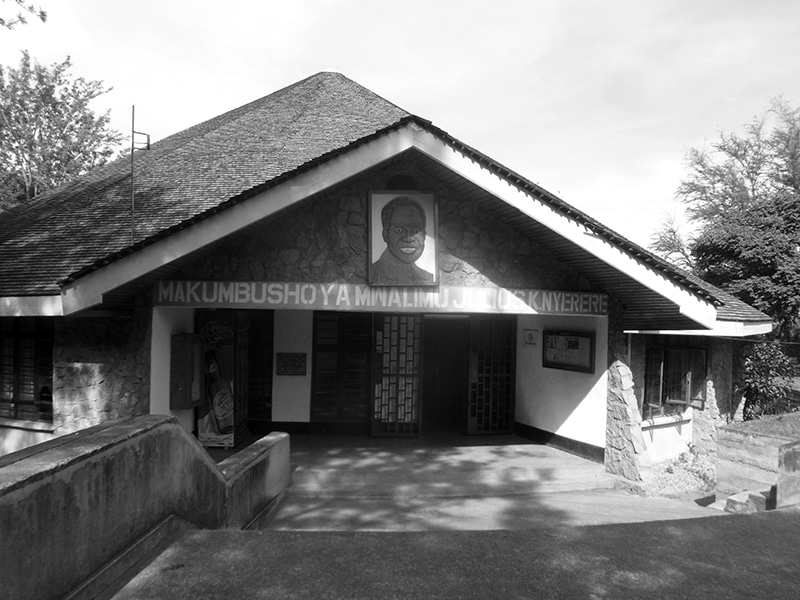
One of the most important museums in Tanzania. The Nyerere Cultural Centre is found in Nyerere’s birthplace and final resting place which is the Butiama hamlet in the Butiama District of the Mara Region. The Mwalimu Julius Kambarage Nyerere Museum is located there. The museum was inaugurated by Tanzanian Prime Minister Hon. Frederick Tluway Sumaye on July 2, 1999. Attendees included former Tanzanian President Julius Nyerere. Mwalimu Julius Kambarage Nyerere donated several artifacts to be displayed there. These are some of the things you’ll find:
- Gifts received amid the country’s transition to independence.
- Presented to him throughout his administration as a token of appreciation.
- Used exclusively on his Tanzanian estate near Butiama.
- Awards in 1985, while he was stepping down as president.
The National History
About its National and Natural Museum
This is a way to preserve and explore Tanzania’s paleontological, paleoanthropological, and archaeological collections. The Coryndon Museum presently called the National Museum of Kenya, established the Natural History Museum in Arusha, Tanzania, in 1987 as the first national and historical department of the museums of Tanzania.
Paleontological and archaeological collections from Tanzania’s Olduvai Gorge are displayed at the museum. This is only a sampling of what the museum has to offer.
An examination of human evolution based on evidence from Tanzania and other countries; Insects of economic importance, large mammalian ecology. An establishment and exhibition dedicated to the professional skinning and support of wild animal species by taxidermists who specialize in this field of work. Rescued wild animals are returned to their native environments. Miniature botanical gardens filled with rare, endangered, and important indigenous plant species from Tanzania are on display. Birds and animals from Tanzania. Germany’s colonial government in Northern Tanzania, and scenes from a fish pond.
Students’ learning opportunities include classes on human evolution and living organisms, the environment, and culture at the Museum of Natural History. They assist high school students with their research and projects, educational and tourism-related seminars and workshops, and an exhibit hall tour.
A museum garden that serves as a unique site for weddings, receptions, meetings, and exhibitions and an incredible backdrop for photography and cultural tourism programs in conjunction with the local community is also accessible at the Museum Art Section.
The Olduvai Gorge Museum
This museum can be found on the Olduvai Gorge’s rim in Tanzania’s Ngorongoro Conservation Area. Its authority operates the museum, founded by Mary Leakey and overseen by Tanzania’s Department of Cultural Antiquities. It is a department of the museums in Tanzania dedicated to educating the public about the fossil deposits of the Laetoli and the Olduvai Gorge.
The Ngorongoro Conservation Area
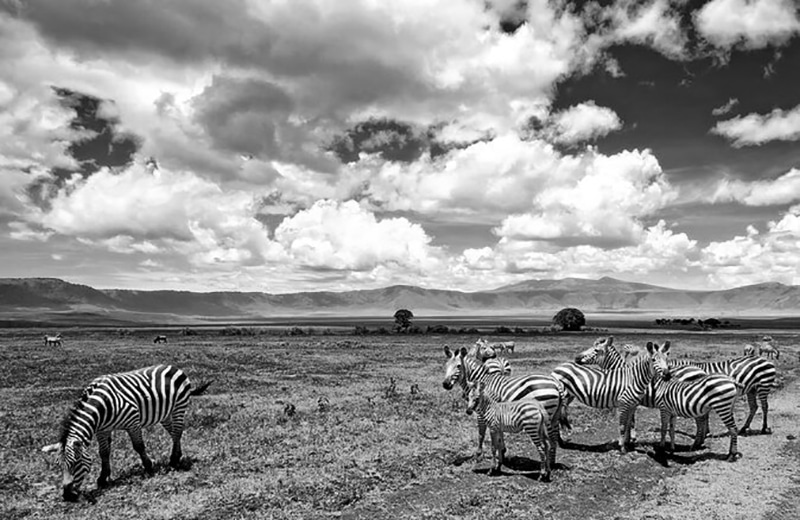
In the northern Tanzanian region of Arusha, 180 kilometers or 110 miles west of Arusha City, lies the UNESCO World Heritage Site of Ngorongoro Conservation Area inside the Crater Highlands geological region. In honor of the huge volcanic crater within it, the area is known as Ngorongoro. It is nursed by the Ngorongoro Conservation Area Authority, a Tanzanian government organization, which has jurisdiction over the conservation area’s boundaries.
Since the establishment of Serengeti National Park by the British colonial authority in 1959, the Maasai pastoralists living in the crater have been forced to leave their ancestral lands to the north because of the 2009 Ngorongoro Wildlife Conservation Act.
Museums in Tanzania – Further Areas
The Maasai Olpopongi Cultural Hamlet
A culturally significant center for the Maasai populace, visiting the Olpopongi Maasai Cultural Village is a must-see for anyone interested in experiencing their lifestyle or learning about the culture. A small educational museum, healing walks, and spear-throwing training are available on-site. It’s a wonderful vacation spot for the whole family. Its travel agency is in Moshi.
Arrangements can be made for pick-ups from Moshi and other areas. There are several options for getting to Olpopongi from the Arusha–Moshi highway. Still, the most direct route is to exit at Boma Ng’ombe (23 km west of Moshi) and follow a partially sealed road of Sanya Juu for 27 and then 25 kilometers till you arrive at Olpopongi.
The Singida Regional Museum
There aren’t labels in this museum at the Open University of Tanzania, but the small collection of arsenals, jewelry, and other artifacts from the region’s tribes is enough to keep you entertained for about an hour.
The Mwanza Sukuma Art Museum
Traditional Sukuma dwellings, a traditional healer’s grass house, blacksmith’s equipment, and a rotating cylinder displaying numerous Sukuma terminology numbering from one to ten are all on display at the Sukuma Museum Bujora village. A transcultural dancing competition with animals as props occurs here every June as part of the famous Bulabo Dance Festival a major event organized in collaboration with the cultural department of museums in Tanzania.
The royal drum pavilion (shaped like a stool) houses a collection of royal drums that are still played on church feast days, official government visits, and other special events, as well as a round church with many traditional Sukuma stylings that was built in 1958 by the museum’s founder and Québecois missionary priest David Fumbuka. As far as I know, there are English-speaking guides.
An on-site traditional drumming and dancing performance can be arranged by the museum for Tsh130,000 (for up to nine persons). In addition, Sukuma drumming classes are given to anyone interested. You’ll have to haggle over the price with the instructors, but don’t expect it to be inexpensive.
Sunday hours are subject to change depending on “when mass concludes.”
Added with a campground, the museum offers no-frills bandas (Tsh30,000 per person with meals) designed to resemble traditional Sukuma dwellings (camping Tsh15,000). You’ll need to plan ahead of time because the accommodation is rarely used. The kitchen and a small bar are both accessible for guests to use.
Bujora, on the Musoma road, lies 18 kilometers eastward of Mwanza. It cost Tsh500 taking a dalla-dalla for 30 minutes to Kisesa from Uhuru Road, north of Mwanza’s market. From Kisesa, a motorcycle will take Tsh1,000 further. Another option is crossing the street and taking a left at the next sign. Continue on the filth road for another 1.7 kilometers, traveling through a few twists and turns; Tsh60,000 or Tsh70,000 for a cab from Mwanza to Arusha, including the driver’s waiting time.
Merely past Igoma, the way from Mwanza, by the left flank of the roadway, are the graves of those who perished in the drowning of the ferry (MV Bukoba) to Lake Victoria in 1996.
Iringa Boma Museum and Cultural Center
Iringa Boma is an educational, recreational, and cultural center in Iringa that offers a range of methods for visitors to experience the island’s customs and culture. It’s a place full of legends, interesting anecdotes, and observations of the Iringa territory; Iringa’s diversified population is the subject of these interesting tales. These stories revolve around customs, traditions, and ways of life.
Museums in Tanzania – The History of its Buildings
Iringa Boma is a relic of Iringa’s ancient past. The German colonial authorities commissioned its construction in 1914 as a military hospital. Africa, Swahili, and Europe all played a role in the design of German colonial architecture. After World War I, the British established it as a regional administrative center. Civil services were provided from 1961 to 2014 while used as a Regional and District administrative building. After two years of significant renovation, it reopened in 2016 as a museum and cultural hub for the surrounding area.
In the Iringa Region, the Centre serves as a fortified bulwark of cultural heritage and tradition known in Swahili as “Boma.
Many other Museums in Tanzania are in Zanzibar. These include but not limited to:
The Zanzibar Sultan’s Palace
As a cultural landmark, the Sultan Palace is one of Zanzibar’s most significant buildings. Located between the House of Wonders and the Old Dispensary, it is a three-story building with ornamented walls in the style of white merlon on Mizingani Road.
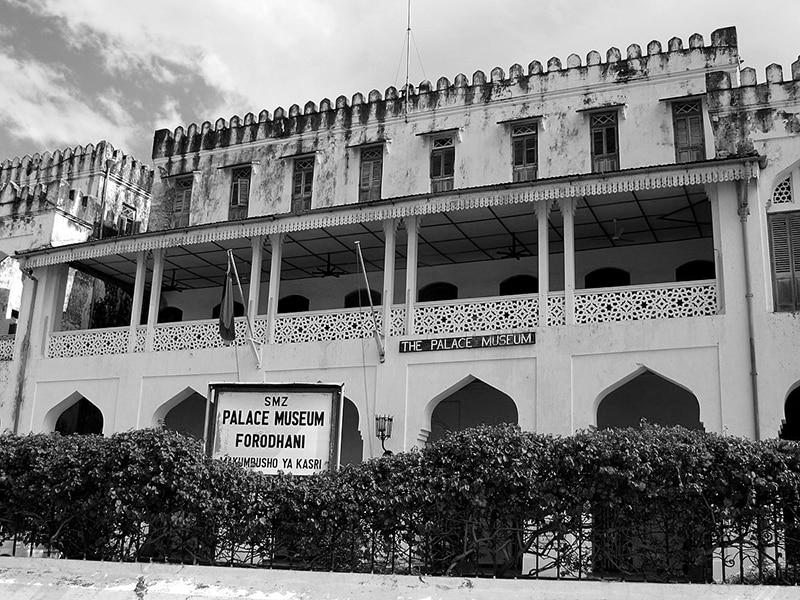
After the Anglo-Zanzibar War of 1896, Bait As-Sahel’s former palace was demolished. A palace for the Sultan’s family was built in the late nineteenth century, and the current one was completed in the 1980s. People’s palace was renamed in honor of the Zanzibar Revolution in 1964 and used as a government building. In 1994, it was repurposed as a museum dedicated to the history and culture of the Zanzibari royal family.
On the first level of the museum, Sultan Khalifa bin Harub is honored; on the second floor, former Zanzibari princess Sayyida Salme, better known as Emily Ruete, is honored; displays include some of her writings, clothing, and other everyday items. Zanzibar’s 19th-century sultan’s personal belongings are on display to give visitors an idea of life in the island’s colonial era.
The National Museum of Zanzibar’s History and Culture
The building of Wonders or Beit-al-Ajaib is an ornate square structure capped by an enormous clock tower. First, in Zanzibar, to incorporate electric lighting and a lift, Sultan Barghash’s residence was built in 1883 as his ceremonial palace. During development, the neighborhood residents began calling it Beit el Ajaib, meaning the House of Wonders. When Sultan Khalid bin Barghash attempted to retake the throne following the death of Sultan Hamad in 1896, the British bombing, termed the shortest-lived war in history, was used to persuade him to abdicate in favor of a British nominee.
When Sultan Hamad was in charge of Zanzibar from 1902 to 1911, he lived on the building’s top floor as a private apartment. The National History& Culture Department of Museums in Tanzania has taken residence in the mansion’s former guest quarters. The dhow culture of the Indian Ocean, Swahili civilization, and nineteenth-century Zanzibar are all on exhibition in the museum’s interior. The museum is well-organized, with everything labeled in both English and Swahili. A life-sized mtepe, a traditional Swahili sailing vessel made solely of coconut fibers and wooden pegs, lies inside the entryway. The structure has been shut down for some while for substantial repairs.
The Peace Memorial Museum
J H Sinclair, a British architect, concocted this Memorial Museum, also known as Beit el Amani and the high court, the British residency, and other notable structures in Zanzibar city. In keeping with Zanzibar’s Arab background, the National Museum’s design is spherical and suggestive of Istanbul and Indian architecture. It’s a great place to learn about the history and culture of the islands. Zanzibar’s rich history is chronicled in the Peace Memorial Museum, which displays artifacts and documents dating back to the Omani Sultanate, British colonial rule, and the country’s independence. History books, archaeological finds, exhibitions on the early trade, slave-ownership, the aristocracy of the Middle Ages, and traditional crafts like stamps and coins are all on display in this imposing building.
The Archaeological Site of Unguja Ukuu Museum
This Leverhulme Trust-funded collaboration between the University of York’s Department of Archaeology and the Centre for Urban Network Evolutions (UrbNet) at Aarhus University focuses on urban ecology and transition in the Zanzibar Archipelago (2019-2022).
According to the study, Zanzibar’s early urban centers drew on, used, and altered their resource surroundings in two major eras of urban expansion. Research on Zanzibar’s Unguja Ukuu and Tumbatu will examine how native materials were utilized and incorporated into the city’s spaces in the 7th and 11th centuries. Additional monitoring will be provided via the use of geochemistry, plant and animal remnants, as well as off-site monitoring. These early towns will better understand how they interact with their surrounding resource environments and the ability to make educated decisions regarding the long-term sustainability and cultural goals of these early towns as a result.
Exhibits on Display at the Princess Salme Museum
The story of Princess Salme, a sultan’s daughter who eloped with a German trader in the late nineteenth century and later produced Memoirs of an Arabian Princess from Zanzibar, is told in this intriguing tiny museum, managed by the culture department of museums in Tanzania and meticulously organized by noted historian Said al Gheithy. Said’s tour of the museum is enhanced if he is on duty.
The Museum of Freddie Mercury
On the 28th anniversary of Freddie Mercury’s death, a museum honoring the late rock icon was officially inaugurated in Shangani, Zanzibar’s Stone Town, to the public on Sunday, November 24, 2019.
Exclusive images of Freddie Mercury taken at various stages in his life have been provided to the Freddie Mercury Museum by Queen Productions Ltd. in the United Kingdom. Through this initiative, you’ll learn about Farrokh Bulsara’s upbringing in Zanzibar, his schooling in Panchgani, and his career as one of the finest entertainers of all time.
For more articles related to Cultural Institutions, click here!
























